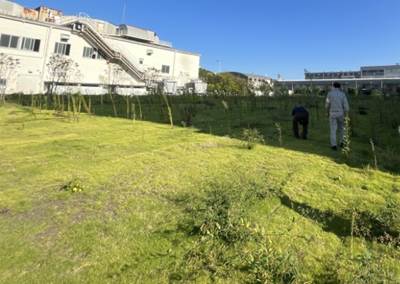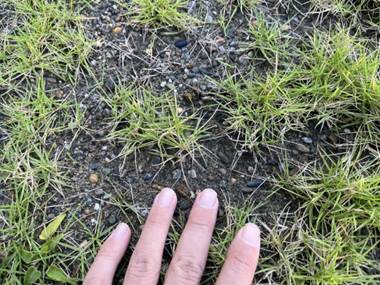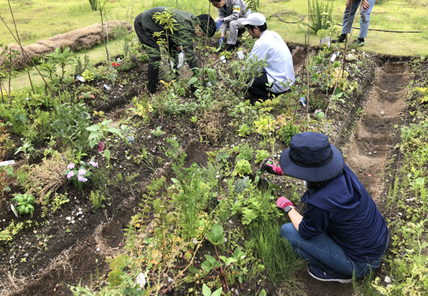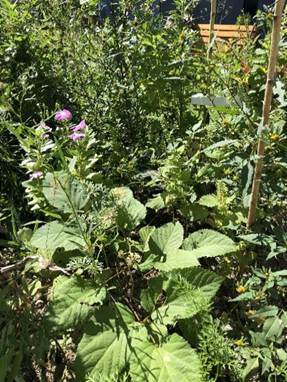【Case Study】 Support for the Implementation of Synecoculture at IHI Corporation Yokohama Works
Feb. 18, 2025
◆Overview
In implementing Synecoculture to a portion of the green space within IHI Corporation Yokohama Works, SynecO provided a year-long consulting service that included initial vegetation proposals, post-introduction management advice, and analysis on the impact of the introduction.
◆Background
Synecoculture was implemented in a 75 m2 area of the lawn at the factory site within the Yokohama Works, aiming to improve employee well-being and create a community-building catalyst. Also, as a part of Nature Positive activities, biodiversity of the area was enhanced compared to the lawn. By verifying the implementation of Synecoculture in factory site in coastal environment, these activities aided to explore the possibility for expansion at other locations and connections with infrastructure projects.


A lawn area before the Synecoculture implementation. Since it is a factory site, there is a lot of gravel, and the soil is hard.
◆Change
About 100 kinds of useful plants were introduced initially in March 2023 and various crops were harvested. New communities within the Yokohama Works have been formed through various events such as planting, harvesting, and enjoying fresh herbal tea. Regular activities by IHI employees are carried out even after the consulting support.
Additionally, implementing Synecoculture to a non-fertile area with gravels contributed to increase diversity and activity of soil microorganisms (41 → 46). By increasing the diversity of plant species, the number of related organisms that theoretically interact with each other increased about 6 times * 2 compared to the initial vegetation.


Two months after the field was launched (left). Before summer, a variety of plants vigorously flourish and become dense (right).
Since the site was a reclaimed area with clayey soil with a lot of gravel and strong see breeze, I was worried about whether the plants would grow properly without fertilizer, no tillage, and no pesticides, but it was an unfounded concern. Of course, the yield is not large, but we can see that a variety of plants and animals are living vigorously in a way that suits the environment. When we observe the field daily, we become aware of seasonal transitions and small changes. We believe that employees becoming more sensitive to changes in their surroundings and understanding the importance of diversity and ecosystems will have a positive effect on their work.
We were able to set up the field smoothly through consulting by SynecO. Through lectures and practical advice on ecosystems and Synecoculture, we were able to equalize the literacy of the participating members, which was also good for community formation.
Akihiro Sato, General Manager, Corporate R&D Division, IHI Corporation (at the time)
◆Services related to this case
[Harmonization between economic activities and renewable natural capital]
Consulting services for Synecoculture Field Implementation
[Improve ecosystem literacy]
Workshops, Lectures and Seminars
*1: Using an index expressed as a deviation value called soil microbial diversity and activity value proposed by DGC Technology Co., Ltd. (https://dgc.co.jp/biodiversity/)
*2: GloBI, an academic interaction database, is used to calculate the number of related species based on a list of plant species observed in green areas (https://www.globalbioticinteractions.org/).
*The content in the press is current as of the date of the interview.
